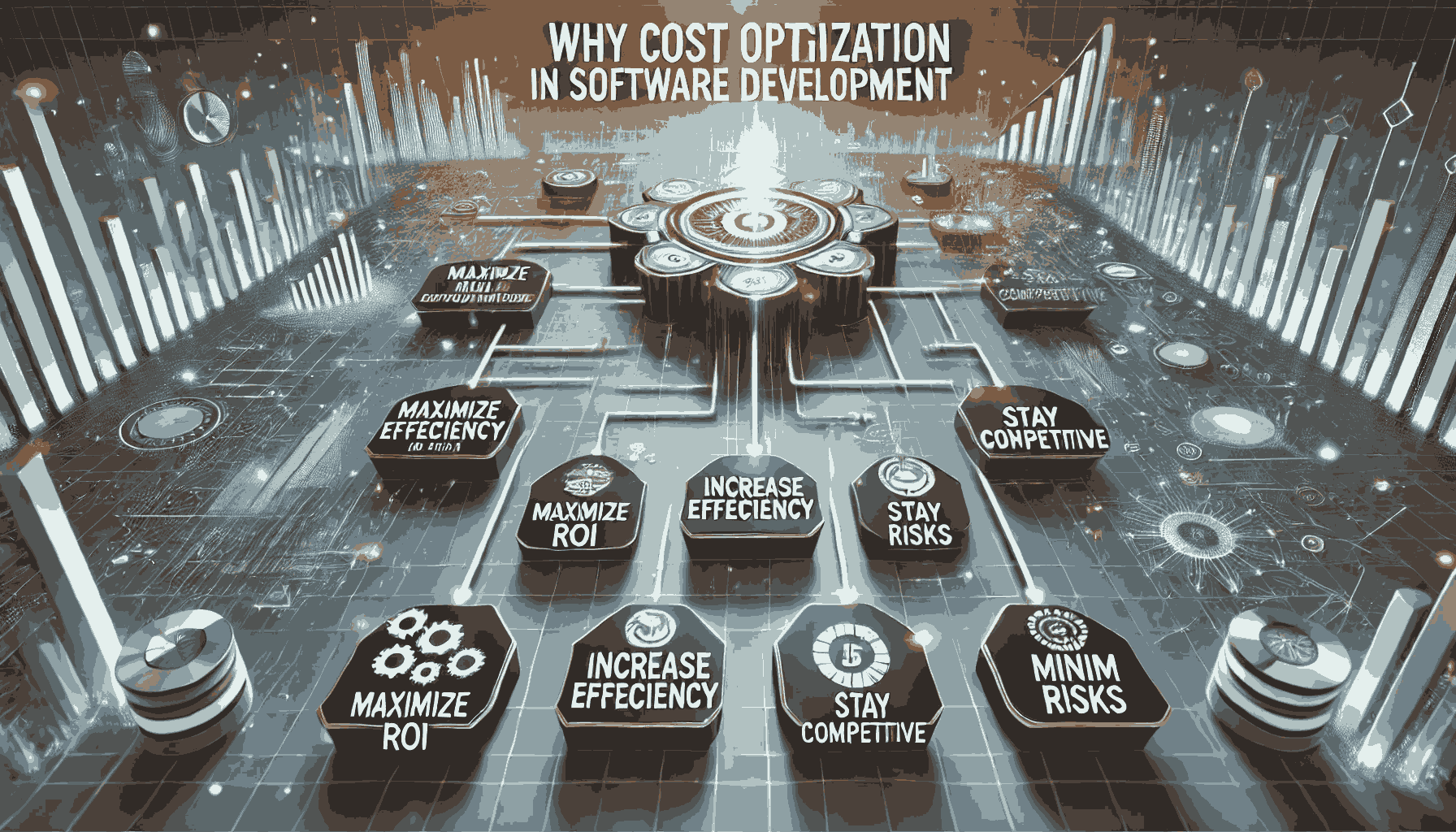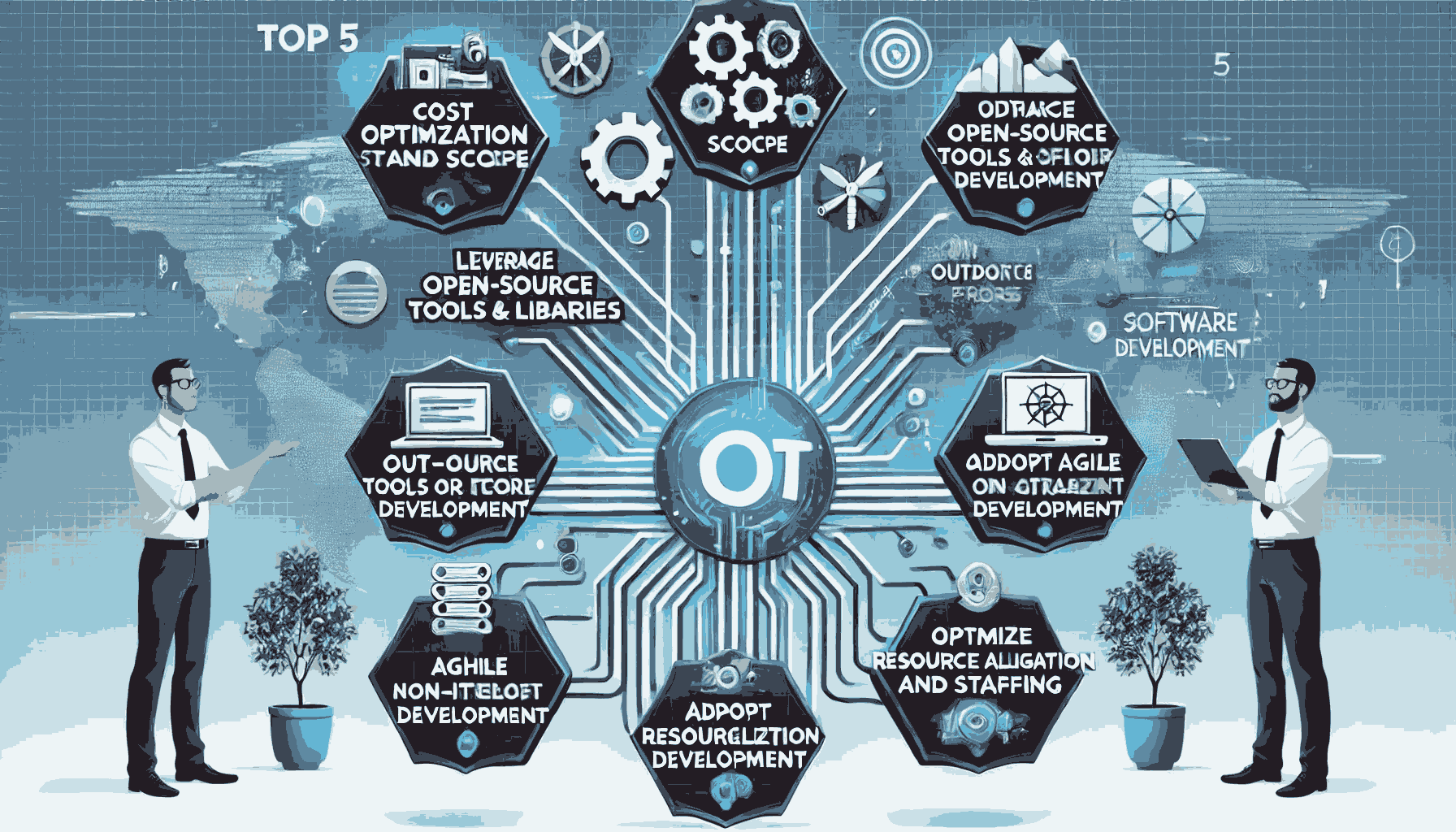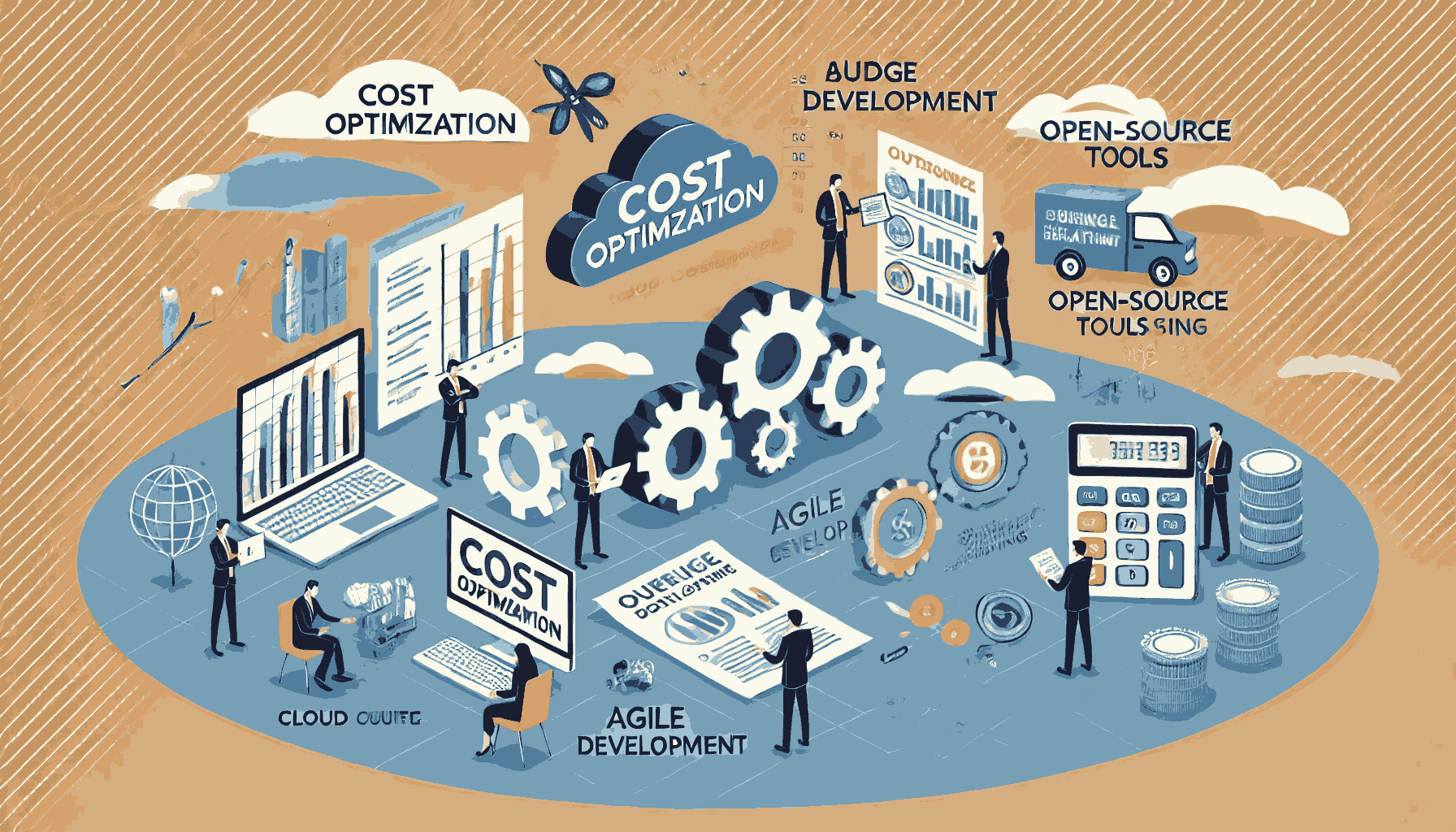In the competitive landscape of Custom software development, managing costs effectively is crucial for businesses to stay ahead. Software projects often involve a substantial investment of time, resources, and money. However, with the right strategies in place, companies can optimize their software development costs without compromising on quality or functionality. This blog will explore the top 5 cost optimization strategies for software development projects that can help businesses maximize their ROI while minimizing unnecessary expenses.
Why Cost Optimization in Software Development is Essential
Software development can be an expensive endeavor, especially if not managed properly. Without a structured approach to cost management, businesses can quickly face unexpected expenses, missed deadlines, or compromised product quality. Cost optimization allows companies to:

- Maximize ROI: Ensure that every dollar spent on software development adds value.
- Increase Efficiency: Improve productivity and reduce wastage in both time and resources.
- Stay Competitive: Deliver high-quality software within budget and ahead of schedule.
- Minimize Risks: Reduce the chances of over-spending and project delays.
By leveraging the following cost optimization strategies, businesses can streamline their software development process and avoid budget over runs.
Top 5 Cost Optimization Strategies for Software Development Projects
1. Define Clear Requirements and Scope
One of the primary causes of budget over runs in software development is poorly defined project requirements. If the scope of the project is vague, it can lead to scope creep, where new features or changes are continuously added to the project without assessing their impact on the timeline and budget. This can result in significant delays and extra costs.
Strategy:
- Start with a detailed analysis of business needs and user requirements.
- Use agile development methodologies like Scrum to break down the project into smaller, manageable pieces.
- Continuously review and refine the scope throughout the development lifecycle to ensure the project stays on track.
Example:
A project that aims to build an e-commerce platform may begin with basic requirements like a product catalog and shopping cart. If new features like AI-driven product recommendations or multi-language support are added after development starts, this will increase both development time and costs. A clear definition of requirements up front can help avoid such surprises.
2. Leverage Open-Source Tools and Libraries
Using pre-built solutions can significantly reduce the time and cost of software development. Open-source software (OSS) provides ready-made solutions that can be integrated into your project, eliminating the need to reinvent the wheel. This approach can be especially useful for commonly used features such as authentication, payment gateways, and data visualization.
Strategy:
- Identify areas in your project that can benefit from open-source software and third-party libraries.
- Evaluate the credibility and support options for each open-source tool before integrating it into your project.
- Contribute back to the open-source community when possible to maintain a good relationship and ensure the longevity of the tools you rely on.
Example:
Instead of developing a payment processing system from scratch, using established open-source libraries or third-party services like Stripe or PayPal can save development time and money. Similarly, open-source frameworks like React or Angular can be used for front-end development, reducing the cost of building a custom user interface.
3. Outsource or Offload Non-Core Tasks
Outsourcing can be an effective way to reduce costs by delegating non-core tasks to third-party vendors or contractors. By outsourcing aspects such as testing, QA, or even certain development tasks, businesses can save on labor costs while ensuring they have access to skilled professionals. Additionally, outsourcing to countries with lower labor costs can significantly reduce expenses.
Strategy:
- Identify the tasks within the software development process that can be outsourced, such as testing, documentation, or design.
- Choose outsourcing partners carefully by evaluating their skillset, expertise, and past performance.
- Use a mix of in-house and outsourced teams to maintain control over the core elements of the project while offloading non-critical components.
Example:
A software development company based in the United States may choose to outsource its quality assurance (QA) tasks to a vendor in Eastern Europe or Asia, where labor costs are lower. This approach allows the company to focus its resources on core development while benefiting from high-quality testing at a reduced cost.
4. Adopt Agile and Iterative Development
The traditional Waterfall method of software development often leads to long development cycles and cost overruns because it requires the completion of all tasks before moving on to the next stage. Agile, on the other hand, emphasizes iterative development, where projects are broken into smaller sprints. This approach allows for continuous testing, feedback, and adjustments, helping to identify and address issues early on.
Strategy:
- Break your project into small, manageable sprints, each with a set goal.
- Regularly review progress with stakeholders to ensure alignment with business objectives and adjust priorities if needed.
- Use continuous integration and continuous deployment (CI/CD) tools to automate testing and deployment, reducing time spent on manual tasks.
Example:
In an agile development environment, a software development team may release a basic version of an app with core functionality in the first sprint. The next sprints can focus on refining features based on user feedback, adding enhancements, and ensuring the software meets business needs, allowing for incremental improvement without the risk of major cost overruns.
5. Optimize Resource Allocation and Staffing
Proper resource allocation is critical to the success of any software development project. Inefficient use of resources, whether it's personnel or infrastructure, can lead to wasted time and increased costs. By carefully assessing the skill sets required for the project and ensuring the right people are working on the right tasks, businesses can optimize their software development process.
Strategy:
- Plan and allocate resources based on project milestones, ensuring that the right team members are available at the right time.
- Avoid overstaffing the project, as having too many developers or designers can increase costs without significantly improving productivity.
- Invest in training and skill development to ensure your team is equipped with the latest tools and technologies.
Example:
If a software project requires a high level of backend development, ensure that senior backend developers are allocated to these tasks, while junior developers focus on less complex tasks. This approach optimizes the skillsets of the team and prevents unnecessary delays due to skill mismatches.

Case Study: Cost Optimization in a Mobile App Development Project
- Company: TechieApp
- Industry: Mobile App Development
- Project: Budget-Friendly Mobile App for E-Commerce Startup
Background:
TechieApp, a mobile app development company, was hired by an e-commerce startup to create a mobile app that allows customers to shop, track orders, and make payments seamlessly. The budget was limited, and the client wanted the app to be developed within six months.
Challenges:
- Limited budget for the app's development.
- Tight timeline.
- The need to include core e-commerce features while minimizing costs.
Cost Optimization Strategies Used:
- Clear Requirements and Scope: TechieApp worked with the client to define the exact features and scope for the first release, avoiding unnecessary features that could drive up costs.
- Open-Source Tools: Instead of developing custom features from scratch, TechieApp used open-source libraries for payment processing (Stripe) and authentication (OAuth).
- Outsourcing QA: The company outsourced the quality assurance (QA) testing to an offshore team to reduce costs and improve efficiency.
- Agile Methodology: The project was broken down into two-week sprints, with continuous feedback from the client to ensure the app aligned with the business goals.
- Optimized Resource Allocation: TechieApp assigned the most experienced developers to the core backend infrastructure and used junior developers for the front-end work.

Outcome:
- The app was developed on time and within budget.
- The startup was able to launch the app successfully and saw an increase in customer engagement and sales.
- The use of open-source tools and outsourcing saved the company 30% in development costs.
Conclusion
Cost optimization is a crucial aspect of software development that can help businesses deliver high-quality products while staying within budget. By implementing strategies such as defining clear requirements, leveraging open-source tools, outsourcing non-core tasks, adopting agile development, and optimizing resource allocation, businesses can significantly reduce the costs associated with software development projects.
It’s important to remember that cost optimization is not about cutting corners but about making smart decisions that maximize value while minimizing waste. By applying these strategies, companies can stay competitive, meet deadlines, and achieve higher ROI.
FAQs
Agile development allows for iterative releases, early feedback, and continuous improvements, reducing the risk of costly errors and delays. It enables businesses to adjust priorities as the project evolves, helping to focus on the most valuable features first.
Outsourcing can reduce labor costs, give access to specialized expertise, and allow companies to scale their workforce without the overhead costs of hiring full-time employees. However, careful vendor selection is important to ensure quality and communication.
When selecting open-source tools, consider factors such as community support, security updates, compatibility with your project, and the tool’s ability to scale with your needs. Always evaluate whether the tool meets the specific requirements of your project.
Yes, by allocating the right resources at the right time, you can avoid bottlenecks and improve productivity. Optimizing the skills and workload of your team ensures faster development and fewer delays in project completion.





